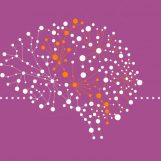Source: analyticsinsight.net
Intelligence Amplification (IA), is designed to complement human intelligence.
Intelligence amplification (IA) or cognitive augmentation or machine augmented intelligence was first proposed in the 1950s and 1960s by cybernetics and early computer pioneers. Intelligent Amplification, a novice term is used to describe the effective use of information technology to augment human intelligence.
IA is often contrasted with AI (artificial intelligence). AI is built on the sole purpose of making the computer’s smarter with human-like intelligence to perform autonomous workflows. To succeed, AI needs better models and data, and IA aims to fill the lacuna.
In contrast to AI, which is a standalone system capable of processing information, IA is designed to complement and amplify human intelligence.
Intelligence Amplification has one big edge over AI! It builds on human intelligence which has evolved over millions of years, while Artificial Intelligence aims to build Intelligence from scratch. Experts view that writing was among the first technologies which might pass as IA. It enabled us to enhance our creativity, understanding, efficiency and, ultimately build on the ultimate intelligence.
Intelligence Amplification: Base of AI
Although IA has been around for many years, it has not been a widely recognised subject. With systems like HoloLens, IA can now be explicitly developed to be the faster ingredient of AI.
IA, many believe, offers a safer way to develop tools and technologies which gain their efficacy from human consciousness rather than building their own intelligence. Tools developed through IA can be used for a variety of purposes such as natural language tools, developing knowledge bases, electronic discovery and image processing tools to name a few.
Intelligence augmentation uses machine learning technologies which are similar to AI, but instead of replacing humans, IA aims to assist them. In this situation, instead of depending solely on machines for business procedures, IA machine learning works in tandem with the human brain. Intelligence Amplification aims to make the workplace more efficient and productive just like AI, however, it does it in partnership with humans to support new discoveries and problem-solving while Artificial Intelligence is a bit different, it seeks to bypass humans altogether. For instance, let’s consider a machine learning algorithm that can process massive amounts of patient data by searching through patient history, family history, data from wearables, previous records and tests to predict illness. This information will be presented to medical staff in a way that supports the doctor, who would use their reasoning to reach a diagnosis. Because the human element (doctor) is still involved, this is Intelligence Amplification. But if the program is restricted to data sorting and reach a diagnosis, then it would be Artificial Intelligence.
Intelligence Amplification: Real-Time Use Cases
Retail
Integrating intelligence augmentation technology into shopping applications can make it easier for Shoppers to find products. for instance, the Walgreens app links to the user shopping card and uses Google Tango’s computer vision – a 3D mapping service – to guide in-store shoppers using a downloaded map. Customers can search item numbers, product categories and product names by voice and command the mapping app to provide them store navigation instructions to the product’s location in the store.
Engineering
Innovative technology has disrupted manufacturing and production. With IA, there is another tool for maintenance and creation of complicated and expensive machines which makes it easier for engineers to make repairs. For example, NGRAIN, a Canadian 3D imaging company uses 3D analytics to scan and detect minor damage to aircraft and uses the information to repair operations and improve maintenance.
Home Decor
IKEA, one of the most well-known home decor companies, created an app with IA technology. It supports both 2D and 3D image recognition and image tracking. With this technology, users can move still photos of furniture and furnishings into an image of a room. It’s also possible to measure the dimensions of the room through the app and allow the users to drop an image of a piece of furniture into the photo. this way, shoppers can see what their Ikea purchases will look like in their home before deciding what to buy.
Military
Intelligence augmentation could be used in high-fidelity visualisation which magnifies situation awareness and improved mission planning. Using 3D models, it would be possible to carry out successful operations in defence.
Medicine
When it comes to complicated medical procedures, using IA technology could improve them significantly. Researchers all over the globe are developing tools. Cambridge consultants have determined potential solutions by combining CT and MRI scans to build 3D images of a patient’s body. This assist surgeons to perform more precise surgical processes.
Summing up, there’s no war between the IA and AI. Both of them play vital roles in our day-to-day lives, as we try to figure out which one is here to stay for the long run. As technology continues to advance, IA can be deployed to help address many of the challenges associated with AI, which is why the two technologies must work cohesively. Doing so would translate to the betterment of society as a whole.


